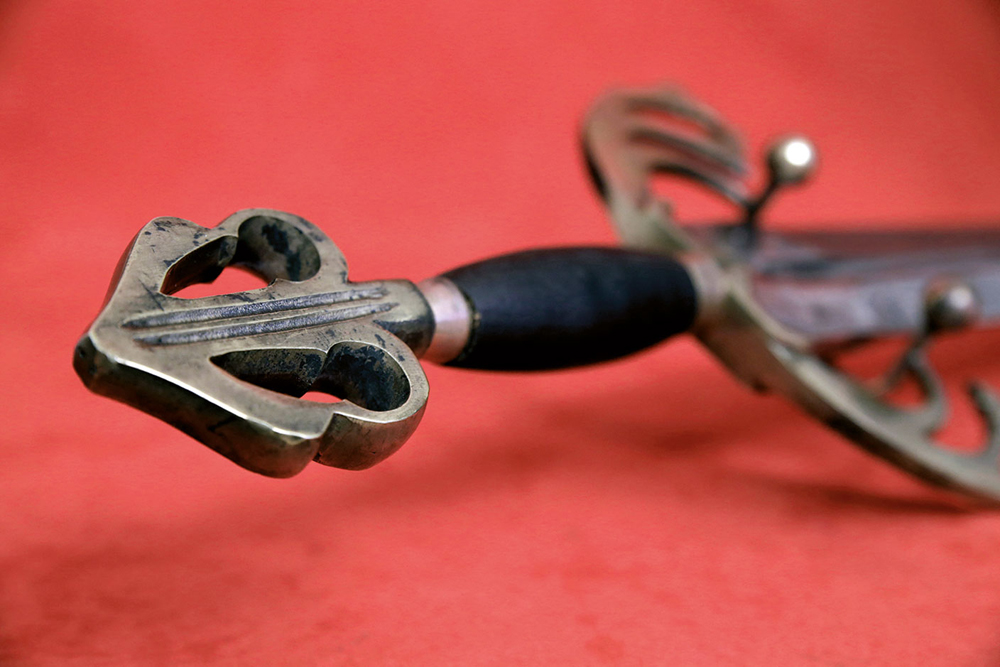
- Valencia 1094. Rodrigo Díaz de Vivar Cid took the city and, in that role, took the sword of Tizona from King Bucar of Morocco. At least that's what the Esthetics of My Cid say. The Cid gave the gun to his children, to the children of Carrion, for their later recovery and finally gave it to his nephew Pedro Bermúdez. There the trail of the sword was lost.

Centuries later, Tizona was in the hands of the alleged Catholic Monarchs. Pierres Peralta Ezpeleta, condestable Agaramontés (1421-1492), worked hard in the negotiations for the marriage of kings, so Fernando the Catholic gave him this sword engraved with the word Io soi Tisona. The new owner of the sword, Count Lerín I, was the grandfather of the baron of Marcilla and of whom he would be the first marquis of Falces, and thus the mythical sword was kept in the castle of Marcilla. It remained there until the 20th century, specifically until the Spanish Civil War.
Tizona was for the golfers the symbol of the glorious past of Spain, so the Francoists took it out of Navarre and brought it to the Madrid Army Museum. After Franco's death in 1975, the sword was returned to the Marquis of Falces, the heir of Peralta, who tried to sell it to the Spanish Ministry of Culture. But the ministry refused to buy the piece claiming that there was no evidence to show that it was the real sword of Rodrigo Díaz de Vivar.
The blade, 78.5 centimeters long and 4.5 meters wide, is a thin blade of sword from the time of Cid (the current head of the sword is more recent, was introduced in the 15th century), according to experts. It is therefore said that the sword that was in the castle of Marcilla for centuries can be a genuine Tizona, but no definitive proof has ever been found. In addition, other Tizones have also been exposed or mentioned in various documents.
And yet, the Junta de Castilla y León bought the sword from the marquess for EUR 1.6 million in 2003.